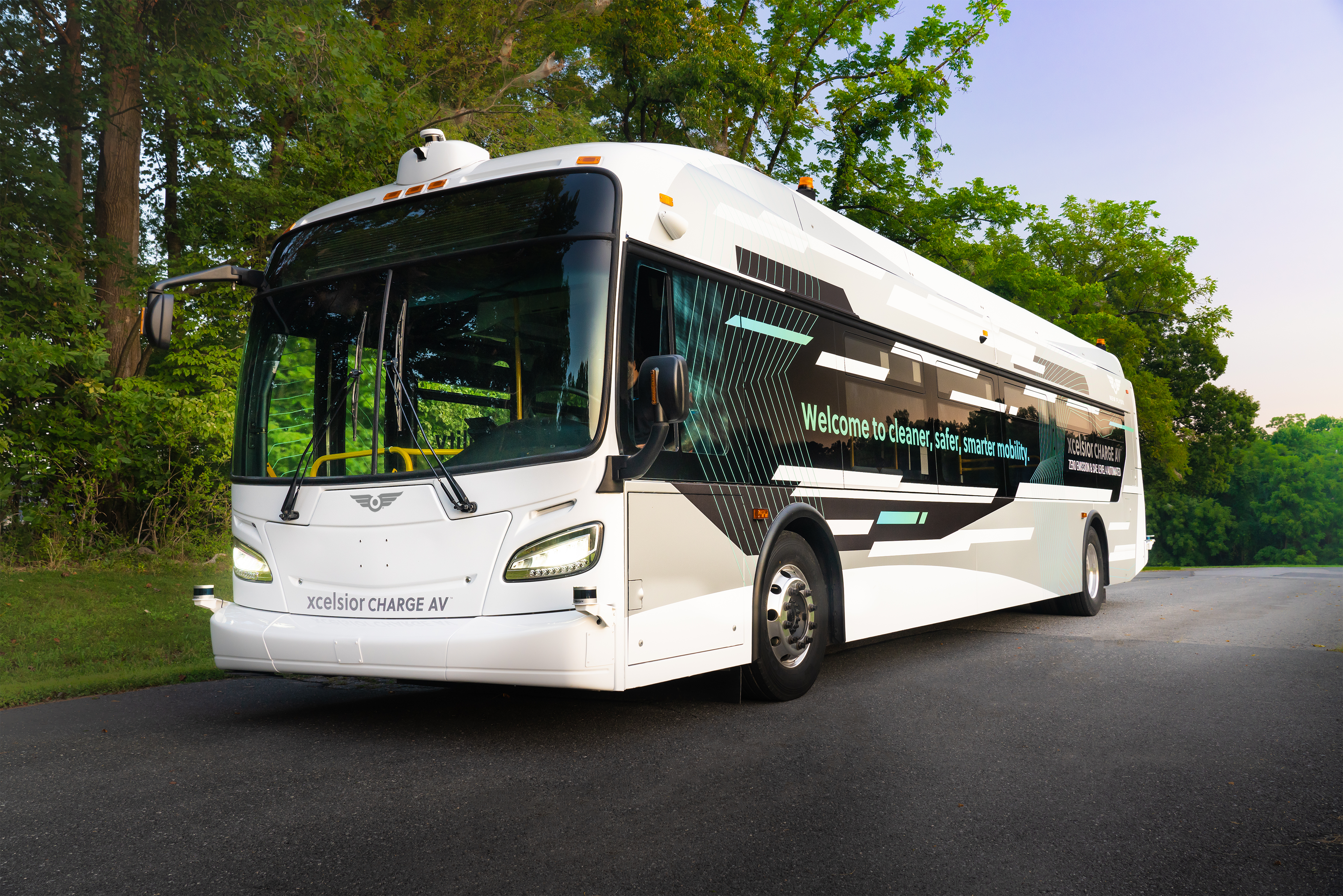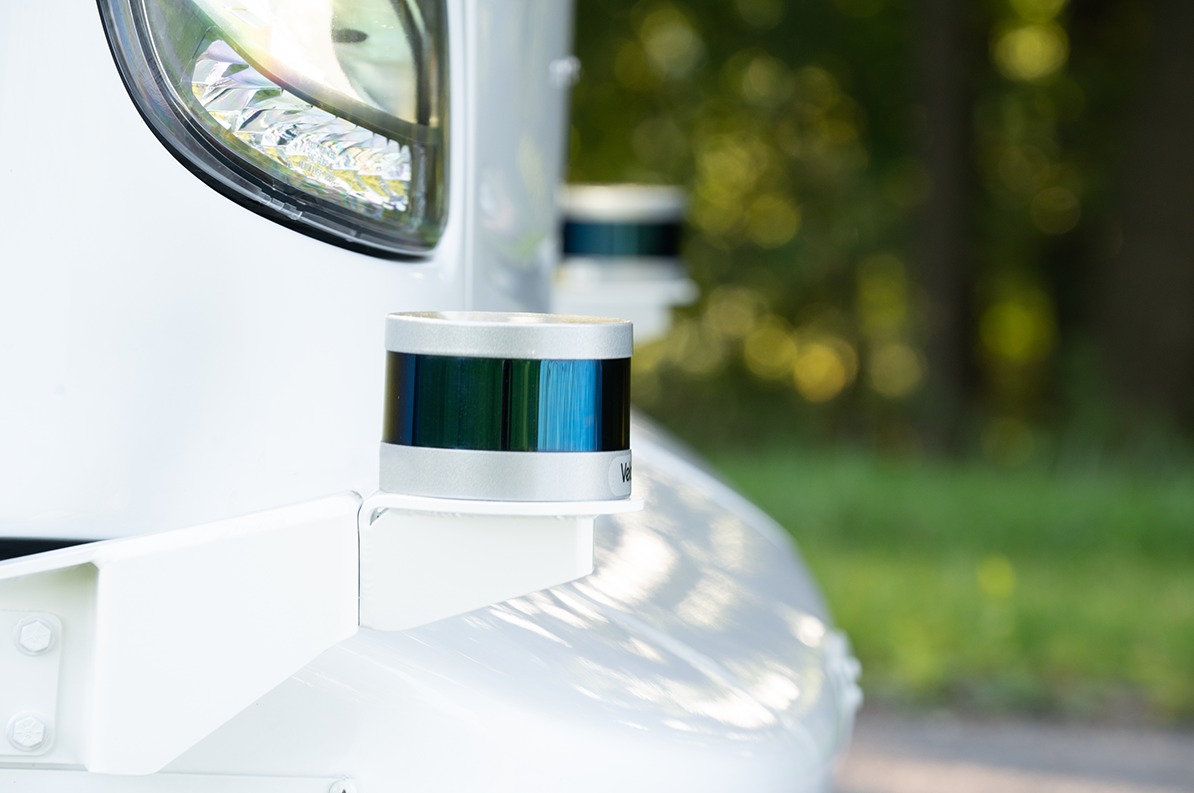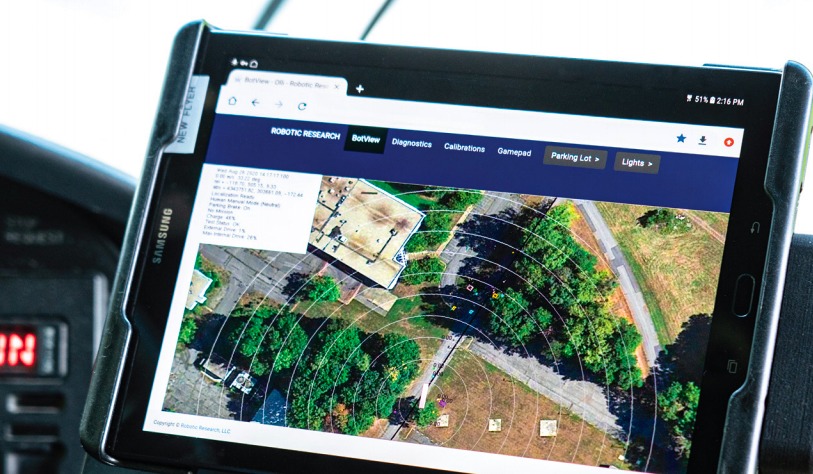In The News
Look, no hands! North America’s first autonomous bus with ZERO human interference is set to transport over 40 passengers along rapid-transit corridor in Connecticut
Published by Daily Mail
- New Flyer’s Xcelsior AV creates a 360-degree, 3-D ‘map’ of the environment
- It can handle any weather or traffic conditions with no human intervention
- The bus seats 40, with room for standing passengers and two wheelchair spots
- They’re being used in a pilot program on a rapid-transit corridor in Connecticut
A Minnesota-based transit manufacturer has just unveiled what it’s billing as ‘North America’s first heavy-duty automated transit bus.’
The 41-foot Xcelsior AV from New Flyer can seat 40, with additional room for standing passengers and two spots for wheelchairs.
The electric vehicle uses AutoDrive technology to construct a 360-degree 3-D model of its surroundings via LIDAR, radar, and cameras. and detect pedestrians, vehicles and other obstacles.
New Flyer has already launched a pilot program with the Connecticut Department of Transportation, with a fleet of Xcelsior buses shuttling passengers along a dedicated transit route between New Britain and Hartfort.

According to New Flyer, the Xcelsior meets the requirements for a Level 4 automated vehicle.
The Society of Automotive Engineers’s’s five-point scale ranges from Level One — a small amount of control, such as adaptive braking if a car gets too close — to Level Five — full automation, where the system can handle all weather, light and traffic conditions anywhere with no human intervention.
By industry standards, Level 4 — where a car can drive itself in a predetermined zone, but not in all areas and conditions — is where ‘self-driving’ begins.
In a promotional video, a human is seen sitting behind the steering wheel of the Xcelsior, though he doesn’t touch it.
New Flyer launched its automated technology program in May 2019, the same month it announced a partnership with autonomous vehicle development company Robotic Research.
Related
Press Releases
Boston orders 80 advanced zero-emission buses from New Flyer with options to purchase more
Read More
In The News
Large New York Order for New Flyer
Read More
In The News
NFI subsidiary New Flyer awarded two contracts from New York for up to 2,090 Xcelsior® transit buses
Read More

